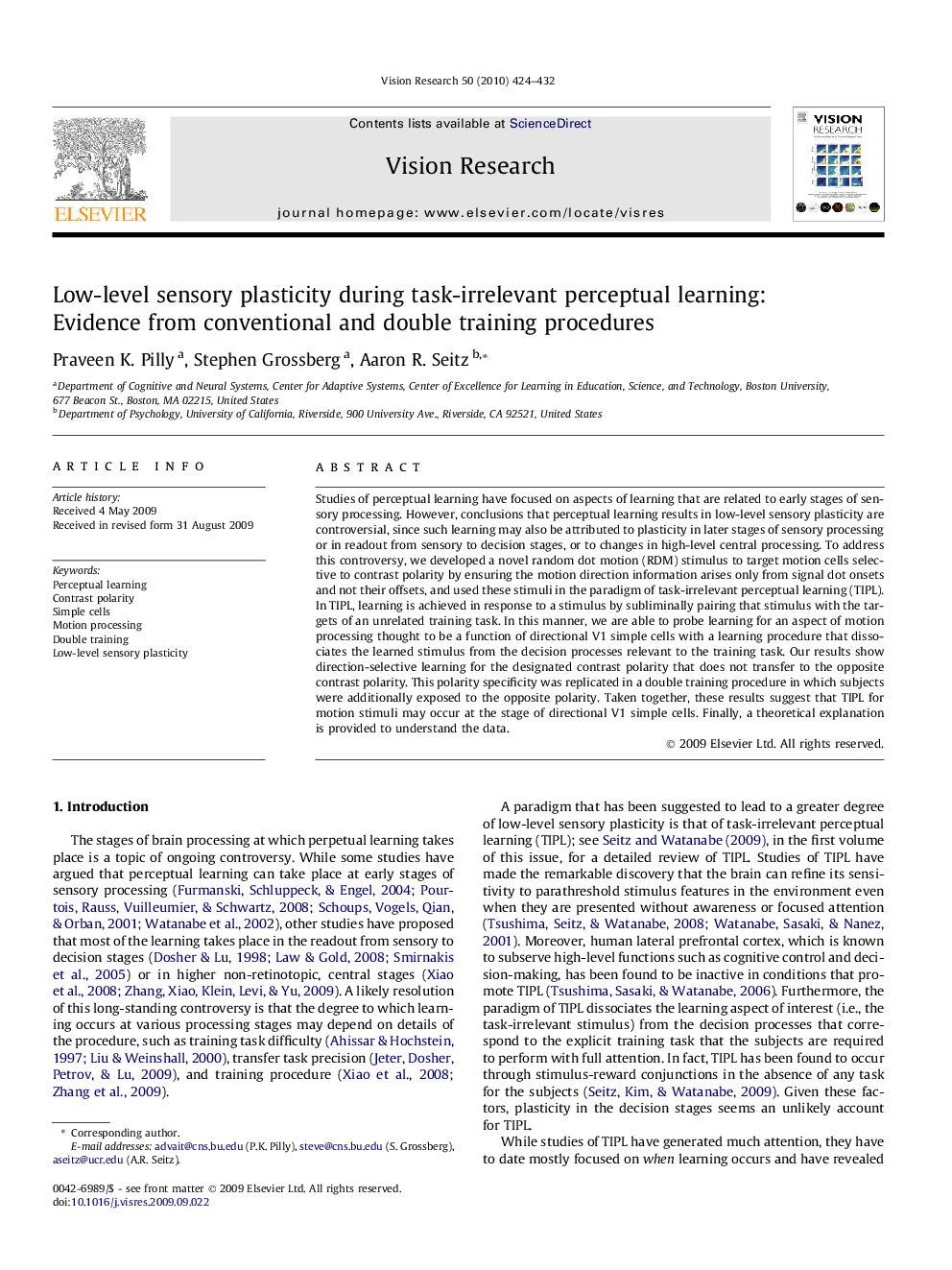| Article ID | Journal | Published Year | Pages | File Type |
|---|---|---|---|---|
| 4034540 | Vision Research | 2010 | 9 Pages |
Studies of perceptual learning have focused on aspects of learning that are related to early stages of sensory processing. However, conclusions that perceptual learning results in low-level sensory plasticity are controversial, since such learning may also be attributed to plasticity in later stages of sensory processing or in readout from sensory to decision stages, or to changes in high-level central processing. To address this controversy, we developed a novel random dot motion (RDM) stimulus to target motion cells selective to contrast polarity by ensuring the motion direction information arises only from signal dot onsets and not their offsets, and used these stimuli in the paradigm of task-irrelevant perceptual learning (TIPL). In TIPL, learning is achieved in response to a stimulus by subliminally pairing that stimulus with the targets of an unrelated training task. In this manner, we are able to probe learning for an aspect of motion processing thought to be a function of directional V1 simple cells with a learning procedure that dissociates the learned stimulus from the decision processes relevant to the training task. Our results show direction-selective learning for the designated contrast polarity that does not transfer to the opposite contrast polarity. This polarity specificity was replicated in a double training procedure in which subjects were additionally exposed to the opposite polarity. Taken together, these results suggest that TIPL for motion stimuli may occur at the stage of directional V1 simple cells. Finally, a theoretical explanation is provided to understand the data.
